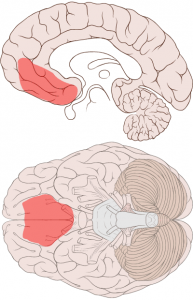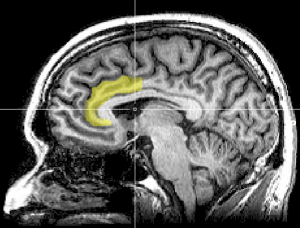Written by Dr. Rhonda Freeman and the Research Committee
Neuroscience research has been making gains within the study of psychopathy to help us better identify and potentially treat this condition. One of its important contributions is the recognition and identification of correlations between specific regions of the brain and the behavior and emotional processing abilities demonstrated in psychopathy.
The underlying neurobiology of psychopathy is complex and encompasses the interplay between several brain regions and systems, and its neurochemistry. Although there has been much advancement in the field of neuroscience, even at this stage, there is still more to learn and discover regarding the neurological correlates of psychopathy.
In a comprehensive review of neuroimaging studies, Koenigs (2012) examined the role of two regions of the prefrontal cortex that are suspected to be associated with psychopathy. The prefrontal cortex is an area of the brain that is believed to be important to reasoning, inhibition of behavior, social emotions, empathy, attention, and executive functions. Collectively, proper functioning within those domains, particularly the processing of social emotions and inhibition, can be considered at the core of what makes us human. As one might suspect, dysfunction of such higher order processes can significantly hinder functioning. The regions of the prefrontal cortex discussed by Koenigs (2012) are the ventromedial prefrontal cortex (vmPFC) and the anterior cingulate cortex (ACC).

Koenigs (2012) elucidated the general findings from the neuroscience literature associated with the functioning of the ventromedial prefrontal cortex. Studies indicated the vmPFC is involved with 1) connecting past decisions or outcomes with new decisions one might be considering/ contemplating (e.g., pursuing a reward). This includes involvement in extinguishing past behaviors and learning from experience. 2) The vmPFC is strongly associated with assigning value to an action or goal of a certain behavior or decision (Grabenhorst & Rolls, 2011). This assists in the process of making a choice between different rewards by weighing which would be better. 3) The vmPFC has a regulating role within the emotional (limbic) system of the brain. Therefore, it is suspected to be involved in the control or regulation of emotions, notably negative emotions. There were additional findings regarding the functions of the vmPFC functions.

The anterior cingulate cortex (ACC) is involved in the processing of decisions, weighing the value of rewards, and reasoning. Studies support that this region also has strong associations with behavior drive, motivation, and emotion regulation. The ventromedial prefrontal cortex and anterior cingulate cortex are located in close proximity within the brain, with numerous interconnections.
The brain has areas of both gray and white matter. The gray matter encompasses the cell bodies and is grayish in color. Many important processes take place within the gray matter, such as speech and movement. Gray matter regions communicate with each other through neuronal fibers or tracts of the white matter. The white matter nerve fibers are protected and covered by a myelin sheath. This allows for rapid transmission of information travelling between the gray matter areas of the brain.
Within his extensive review of the literature, Koenigs (2012) consistently found there were significant differences within the gray and white matter of the vmPFC and ACC of the brain of subjects with psychopathy. He examined studies that investigated the structure of the gray matter through MRI. An MRI looks at the structure of the brain from images reflecting its thickness and volume. The findings of such studies indicated that individuals with psychopathy demonstrated reduced prefrontal gray matter volume.
With respect to white matter, there were two studies that examined the integrity of neuronal tracts within the brain of individuals with psychopathy. Koenigs reviewed these studies, which relied upon diffuse tensor imaging (DTI). DTI is a type of MRI that allows cerebral white matter tracts to be viewed. Within both studies, the group with psychopathy demonstrated weak interconnections between the prefrontal cortex and certain areas of the subcortical (inner) regions of the brain. The findings suggested that there was less communication between the vmPFC and amygdala. Koenigs noted that the sample size of each of these studies were small.
Abnormalities were also demonstrated with regard to studies that relied upon fMRI. An fMRI examines the brain’s functional status (activation) at rest, as well as when involved in a task by examining cerebral blood flow in ‘real time.’ This allows activation levels within the brain to be measured or determined within a subject. Several studies that examined psychopathy through fMRI consistently found reduced gray matter activation within the prefrontal cortex.
Find out more about the functions and importance of the ventromedial prefrontal cortex and anterior cingulate cortex in psychopathy by reading Koenigs’ article.
We plan to review additional articles in the future that address correlations between the emotional and cognitive impairments of psychopathy and dysfunction within specific regions of the brain.
Reference: Koenigs, M. (2012). The role of prefrontal cortex in psychopathy. Reviews in the Neurosciences, 23, 253-265
Also referenced:
Grabenhorst, F and Rolls, E. (2011). Value, pleasure and choice in the ventral prefrontal cortex. Trends in Cognitive Sciences, 15 (2), 56-67



